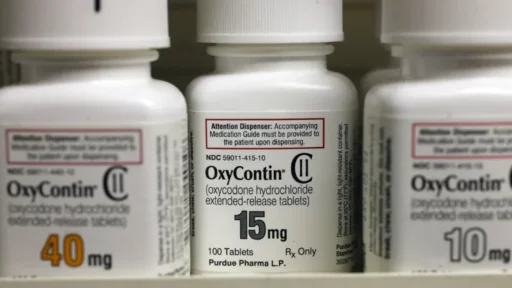Understanding the Canadian Opioid Crisis Through a Groundbreaking Look: ‘Dopesick’
In a bid to deepen public knowledge and understanding of the opioid crisis in Canada, a blog post on TechDaily delves into a revealing new series. “Dopesick“, a Hulu limited series, depicts the human side of the disaster. Using this series as a canon, let’s take a more intimate look at the opioid crisis, the opioid class action lawsuits, and the aftermath affecting Canadians.
The Opioid Crisis
The opioid crisis in Canada is a public health emergency that has not received the visibility it deserves. Opioids are powerful drugs used primarily for pain management. While they can be effective when used correctly, their overuse or misuse can lead to addiction, overdose, and even death.
– Opioids such as fentanyl, oxycodone, and others are often linked to cases of addiction and fatal overdoses.
– Many people originally prescribed these medications for valid health concerns end up becoming addicted.
– The crisis has different faces: homeless individuals, struggling workers, wealthier suburbs, and more.
Dopesick: An Intimate Look at The Crisis
Inspired by Beth Macy’s best-selling book of the same name, Dopesick focuses primarily on how opioid addiction has impacted rural America. However, the same issues highlighted in this program can be seen in Canada. Dopesick reveals the human cost of the opioid epidemic, peeling back layers of polished corporate procedure to show the lives torn apart by addiction – many of whom were originally seeking relief from physical pain.
The series also throws a spotlight on the role that pharmaceutical companies played in driving the epidemic, highlighting the link between marketing tactics and heightened addiction rates.
Some key insights from the series that relate directly to the Canadian crisis include:
– Significantly, the series puts a human face on the statistics and figures we often see, reminding us that the opioid crisis affects real people with real families and communities.
– While the series acknowledges broader systemic issues, it emphasizes that the primary victims of the crisis are individuals with addictions.
– Dopesick illustrates the struggle of whistleblowers attempting to fight the deeply entrenched interests of Big Pharma. In the show, these companies are portrayed as prioritizing profits over public safety, raising questions about the same business practices in Canada.
– It stresses the importance of naloxone, a medication that can reverse opioid overdose effects and save lives.
Opioid Class Action in Canada
In recent years, governments across Canada have launched opioid class action lawsuits against major pharmaceutical companies. The lawsuits allege that these companies falsely marketed opioids as less addictive than other pain medications, leading to widespread addiction and overdose issues.
Aftermath of the Opioid Crisis
A disturbing aftermath of the opioid crisis is the increase in crime rates, specifically related to drug trafficking and abuse. Many people have resorted to illegal means to satisfy their addiction, creating a cycle of crime and addiction that has proved challenging to break.
The crisis has also contributed to an increased number of homeless individuals across Canadian cities. Many new homeless individuals are opioid addicts who lost their jobs and homes due to their addiction.
Conclusion
As a society, we need to continue grappling with the multiple ways the opioid crisis manifests in our communities and healthcare systems. Dopesick illustrates this disaster in an eye-opening manner, and it stands as a far-reaching clarion call for change. The series indirectly highlights the need for ongoing opioid education and addiction resources, more stringent guidelines for prescribing opioids, and the urgency of naloxone availability to immediately address overdoses.
The series embodies the harrowing experiences of those undergoing opioid addiction, relieving it from statistics and figures. It serves as a sobering reminder that the opioid crisis needs our immediate attention and action. Ultimately, it presents an opportunity to understand the opioid crisis not just as a far-off tragedy, but as a challenge that is deeply woven into the fabric of our lives.
